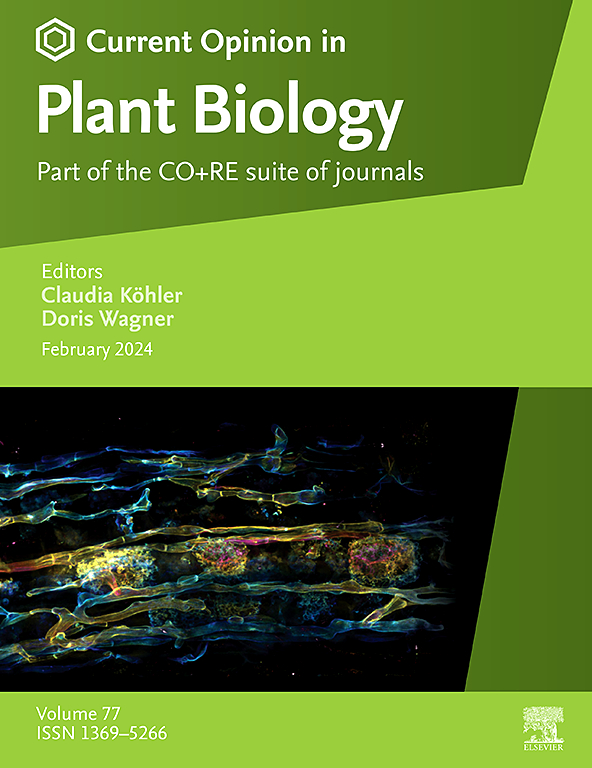Branching under pressure: Influences of cell wall architecture and biomechanics on lateral root morphogenesis
IF 7.5
2区 生物学
Q1 PLANT SCIENCES
引用次数: 0
Abstract
Plants carry out a unique type of organogenesis in which cells do not move relative to each other but instead maintain their relative positions and grow in concert. The coordinated regulation of cell shape and size is thus essential for organ morphogenesis, but in a few developmental processes, most notably in invasive growth and the establishment of branched tissue architectures, cell and tissue growth in plants involves the displacement of surrounding or overlying tissues. Plant cells accomplish patterned developmental morphogenesis in part due to the mechanically complex architectures of their cell walls, which can anisotropically constrain the expansion that is facilitated in many cases by the cellular uptake of water that results in cell pressurization. Here, we focus on one example of patterned tissue growth and cell displacement, the formation and emergence of lateral roots, as a paradigm for understanding how cell wall architecture and cellular biomechanics influence the differentiation and growth of new organs in plants. We highlight recent advances in our knowledge of how hormone signaling, transcriptional regulation, cytoskeletal dynamics, and cell wall synthesis and remodeling influence lateral root initiation and emergence, and propose hypotheses and potential research directions for future studies of these complex but essential developmental processes.
压力下的分枝:细胞壁结构和生物力学对侧根形态发生的影响
植物进行一种独特类型的器官发生,细胞之间不是相对移动,而是保持它们的相对位置并协同生长。因此,细胞形状和大小的协调调节对器官形态发生至关重要,但在一些发育过程中,尤其是在侵入性生长和分支组织结构的建立中,植物细胞和组织的生长涉及周围或覆盖组织的移位。植物细胞完成模式发育形态发生的部分原因是由于其细胞壁的机械复杂结构,这可以各向异性地限制扩张,在许多情况下,细胞对水的摄取导致细胞加压。在这里,我们聚焦于组织生长和细胞位移的一个例子,侧根的形成和出现,作为理解细胞壁结构和细胞生物力学如何影响植物新器官分化和生长的范例。我们重点介绍了激素信号、转录调控、细胞骨架动力学和细胞壁合成和重塑如何影响侧根的发生和萌发的最新进展,并为这些复杂但重要的发育过程的未来研究提出了假设和潜在的研究方向。
本文章由计算机程序翻译,如有差异,请以英文原文为准。
求助全文
约1分钟内获得全文
求助全文
来源期刊

Current opinion in plant biology
生物-植物科学
CiteScore
16.30
自引率
3.20%
发文量
131
审稿时长
6-12 weeks
期刊介绍:
Current Opinion in Plant Biology builds on Elsevier's reputation for excellence in scientific publishing and long-standing commitment to communicating high quality reproducible research. It is part of the Current Opinion and Research (CO+RE) suite of journals. All CO+RE journals leverage the Current Opinion legacy - of editorial excellence, high-impact, and global reach - to ensure they are a widely read resource that is integral to scientists' workflow.
 求助内容:
求助内容: 应助结果提醒方式:
应助结果提醒方式:


